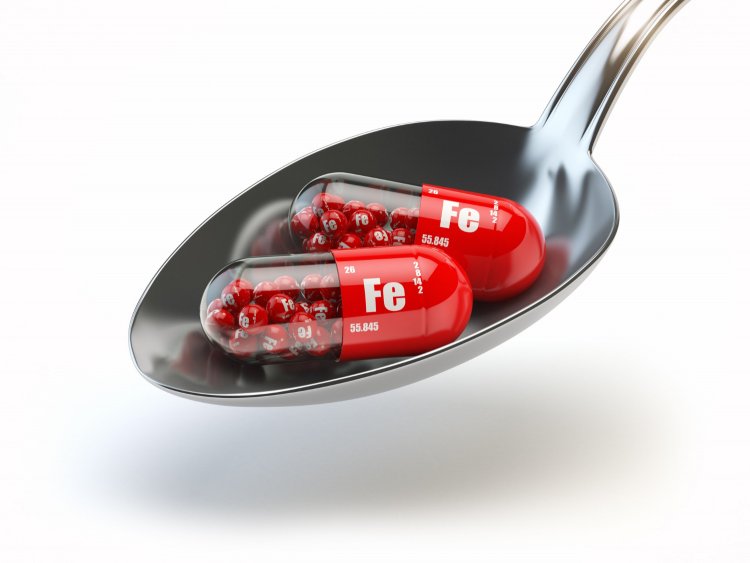Iron Deficiency Anemia: Causes, Symptoms, and Treatment
Iron deficiency anemia (IDA) is a prevalent nutritional disorder characterized by insufficient iron levels to support normal red blood cell (RBC) production. This condition results in reduced hemoglobin, leading to decreased oxygen transport in the body. The comprehensive analysis of IDA includes understanding its etiology, pathophysiology, clinical manifestations, diagnostic criteria, treatment protocols, and preventive strategies.

Etiology of Iron Deficiency Anemia
Iron deficiency anemia arises from a disparity between iron intake, absorption, and loss. Key etiological factors include:
Inadequate Dietary Intake
Iron is predominantly sourced from dietary intake. Heme iron, found in animal products like red meat, fish, and poultry, is more readily absorbed compared to non-heme iron from plant-based sources such as beans, lentils, and spinach. Vegetarian and vegan diets, if not well-planned, can lead to iron deficiency due to lower bioavailability of non-heme iron.
Increased Physiological Demands
Certain physiological states elevate iron requirements:
- Pregnancy: Increased blood volume and fetal growth demand higher iron levels.
- Childhood and Adolescence: Rapid growth spurts necessitate more iron for developing tissues.
Blood Loss
Chronic or acute blood loss significantly impacts iron reserves:
- Menorrhagia: Heavy menstrual bleeding is a common cause in women.
- Gastrointestinal Bleeding: Conditions like peptic ulcers, hemorrhoids, or colorectal cancer can lead to significant blood loss.
- Frequent Blood Donations: Regular donations can deplete iron stores.
Malabsorption Syndromes
Conditions that impair iron absorption include:
- Celiac Disease: Damaged intestinal villi hinder nutrient absorption.
- Inflammatory Bowel Disease: Chronic inflammation affects the intestinal lining.
- Gastric Surgeries: Procedures like gastrectomy reduce stomach acid, essential for iron absorption.
Pathophysiology of Iron Deficiency Anemia
Iron is a critical component of hemoglobin, myoglobin, and various enzymes. Hemoglobin synthesis is dependent on adequate iron supply. When iron intake or absorption is insufficient, the body's iron stores (ferritin) are depleted, leading to reduced hemoglobin production and hypochromic, microcytic anemia. The body's compensatory mechanisms include increased cardiac output and redistribution of blood flow to vital organs, which may cause symptoms of tissue hypoxia.
Clinical Manifestations
IDA presents with a spectrum of symptoms, ranging from subtle to severe:
General Symptoms
- Fatigue and Weakness: Most common symptoms due to decreased oxygen delivery.
- Pallor: Visible in the skin, conjunctiva, and nail beds.
- Dyspnea: Shortness of breath, especially on exertion.
- Tachycardia and Palpitations: Result from increased cardiac output to compensate for low oxygen levels.
- Dizziness and Headaches: Due to reduced cerebral oxygenation.
Specific Signs
- Koilonychia: Spoon-shaped nails.
- Angular Cheilitis: Cracks at the corners of the mouth.
- Glossitis: Inflamed and sore tongue.
- Pica: Craving for non-nutritive substances like ice, dirt, or starch.
Diagnosis
A thorough diagnostic approach is essential for confirming IDA and identifying its cause:
History and Physical Examination
Assess dietary habits, menstrual history, gastrointestinal symptoms, and signs of chronic disease.
Laboratory Investigations
- Complete Blood Count (CBC): Reveals microcytic, hypochromic anemia (low hemoglobin, hematocrit, mean corpuscular volume (MCV), and mean corpuscular hemoglobin (MCH)).
- Serum Ferritin: Low levels indicate depleted iron stores.
- Serum Iron and Total Iron-Binding Capacity (TIBC): Low serum iron and high TIBC suggest iron deficiency.
- Transferrin Saturation: Low saturation supports the diagnosis.
Additional Tests
- Fecal Occult Blood Test (FOBT): To detect gastrointestinal bleeding.
- Endoscopy and Colonoscopy: For visualizing and identifying sources of gastrointestinal blood loss.
- Bone Marrow Biopsy: Rarely needed, but can show absent iron stores.
Treatment
Treatment aims to replenish iron stores and address the underlying cause:
Dietary Modifications
Increase intake of iron-rich foods. Enhance non-heme iron absorption by consuming vitamin C-rich foods (e.g., citrus fruits) and avoiding inhibitors like tea and coffee during meals.
Iron Supplementation
- Oral Iron: Ferrous sulfate, ferrous gluconate, or ferrous fumarate are common supplements. Typically prescribed for several months until hemoglobin normalizes and iron stores are replenished.
- Intravenous Iron: Indicated for patients with malabsorption, intolerance to oral iron, or severe anemia requiring rapid correction.
Treatment of Underlying Causes
Essential for sustained improvement:
- Menorrhagia: Hormonal treatments or surgical interventions.
- Gastrointestinal Bleeding: Medical or surgical management of ulcers, polyps, or tumors.
- Celiac Disease: Adherence to a gluten-free diet.
Prevention
Preventive strategies focus on maintaining adequate iron intake and early detection:
Balanced Diet
Incorporate a mix of heme and non-heme iron sources. Educate high-risk groups (e.g., pregnant women, vegetarians) on dietary choices.
Regular Screening
Routine screening in at-risk populations (infants, adolescent girls, pregnant women, elderly) helps in early identification and treatment.
Public Health Initiatives
Fortification of staple foods with iron, educational programs about iron nutrition, and addressing food insecurity.
In conclusion, iron deficiency anemia is a significant public health concern with widespread implications. Early identification, appropriate treatment, and preventive measures are essential for managing this condition and improving the quality of life for affected individuals. Continuous research and public health efforts are crucial in reducing the prevalence and impact of iron deficiency anemia globally.
Disclaimer
The information provided in this article is for educational purposes only and should not be considered medical advice. If you have any health concerns or are experiencing symptoms, it is important to consult with a healthcare professional, such as a doctor or clinic, for proper diagnosis and treatment. Always seek the advice of your doctor or other qualified health provider with any questions you may have regarding a medical condition. Do not disregard professional medical advice or delay in seeking it because of something you have read in this article.
#IronDeficiency #Anemia #Health #Nutrition #MedicalAdvice #Healthcare #Prevention #DietarySupplements
What's Your Reaction?





















